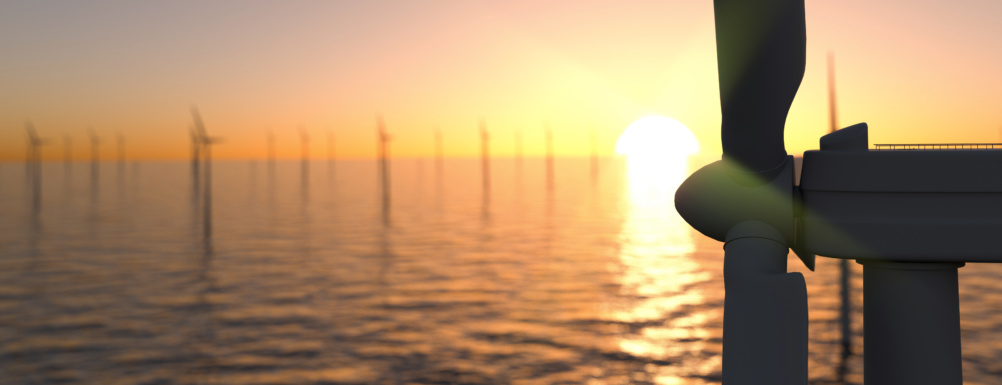The clock is well and truly ticking. In less than 1500 weeks the UK - along with many other countries - hopes to have played a role in averting the worst impacts of climate change by bringing all greenhouse gas emissions to net zero (i.e. the point where we’re no longer adding to the amount of greenhouse gases in the atmosphere).

It is, says Royal Academy of Engineering president Prof Sir Jim McDonald, “the existential challenge of the 21st Century”. And whilst policy makers, businesses, and consumers all have a role to play, it’s ultimately engineers who will develop and deliver the solutions. “This is not something we should be debating very much more,” McDonald told The Engineer. “We need to move to action. And engineers bring in the rigor and the knowledge and expertise of what needs to be done to deliver and address; and how it’s done.”
By taking a systems approach we can model, map and understand the interplay between policy, economics, societal engagement and technological solutions
Clearly one way in which engineers will help is through innovation and the development of technology: from small modular nuclear reactors, to renewably-powered electrolysers for producing green hydrogen.
But without a clear plan of how it’s deployed and integrated, technology will only get us so far. For McDonald, a passionate advocate of the systems engineering mindset, it’s the engineer’s rigorous approach to problem solving and famed ability to break down complexity that will be the real key to decarbonising our tangled mix of energy use, transportation, construction and infrastructure. “If we’re not careful, it can look like an overwhelming challenge,” he said. “But by taking a systems approach we can model, map and understand the interplay between policy, economics, societal engagement and technological solutions. And that, for me, is where the engineering rigor really comes in.”
MORE ON NET ZERO FROM THE ENGINEER
POLL: UK ENERGY AND THE WAR IN UKRAINE
This process begins, he said, by establishing a clear vision of where we want to get to, of what the world could look like in 2050, and to clearly define our expected requirement for things like offshore wind, hydrogen and nuclear.
With this big picture view in place the next step is to identify what McDonald terms the “low regrets” options: realistic, priority actions – often spanning multiple policy areas - that can be taken now to put the UK firmly on the path to net zero by 2050. Indeed, in an effort to help drive investor confidence in this approach the academy recently published a framework and methodology for identifying some of these options.
Activities that hit this sweet spot include upgrades to the electricity grid and distribution networks to deal with greater electrification and renewables, and the scaling up of energy storage capabilities. McDonald also singled out the need for an accelerated focus on carbon capture and storage, a technology area that has - he said - been something of a victim of political indecision. “We should have been moving in this a decade ago. But the waxing and waning of government commitments have stopped the UK going beyond the excellent academic base we have. We need to move now to get industrial scale deployments and demonstrate this at scale.”

For an example of how a systems approach can help bring about this kind of progress, McDonald pointed to Shetland’s ORION project, a collaborative effort (involving BP, Shell, SSE, Equinor and the Shetland Council) that is repurposing expertise honed in the oil & gas sector to transform Shetland into a green energy hub. The project, which aims to harness Shetland’s huge wind and wave energy resource to produce green hydrogen, is, said McDonald, a great example of multiple stakeholders coming together to develop and implement a far-reaching clean energy plan.
Another example of systems thinking in action is a recent Scottish government report led by McDonald aimed at transforming how Scottish companies secure work in offshore wind. “We imagined 10 years ago that we would create 26,000 jobs in Scotland. But because of policy changes….we have been dependent on European, Scandinavian and Asian devices to deliver that value. So with a great deal of input from industry and the majority of engineers, we took a systems perspective and explored what would be necessary to deliver 40GW of offshore wind by 2030.”
The resulting report (the Scottish Offshore Wind Strategic Investment Assessment) identifies some of the ways in which Scotland’s existing operations and subsea capability can be transitioned to capture the economic value of that scale up. And critically, said McDonald, it has the buy-in of a range of industrial players. “Scottish Power, SSE, Global Energy, Subsea 7 - all of them made an unconstrained commitment to be working together to help build supply chain opportunity and help transition the oil & gas subsea community.”
Getting to net zero by 2050 will – he said – require this appetite for collaboration to be replicated across industry. “If we’re looking at decarbonising the aviation industry we need the airframers, we need the oil and gas companies to create sustainable aviation fuels and we need to think about quite dramatic new designs and propulsion technologies. That can’t happen with one company, you need that integrated infrastructure. Some of them will ultimately of course compete, but in this pre-competitive stage as they redefine the future for their industry, we really need that concerted effort and industry leadership.” And despite the obvious challenges of getting competitors to work together, McDonald’s optimistic that the appetite for collaboration is there. “Because of the need to build economic opportunity a lot of these sectors are self-organising. They will compete, but they’ve got to coordinate in order to define that future market for themselves.”
Thanks to commercial imperatives, he’s also optimistic about industry’s appetite to transition to new markets and technology areas. “The environmental, social and governance (ESG) agenda is no longer a nice to have, it’s a market requirement. The market is clearly triggered now. The big investment houses are advising not to invest in companies that cannot produce a credible strategic plan on how they make their contributions to achieving net zero.”
We cannot let our overdependence on fossil fuels and the disruption caused by the current conflict weaken our resolve to decarbonise our economy as quickly as possible
Indeed, this growing commercial momentum behind the push for net zero was one of the key messages McDonald took away from Glasgow’s 2021 COP26 climate summit. Whilst many commentators were disappointed that the summit didn’t lead to stronger commitment, McDonald was encouraged by a notable shift of tone. “Regular attendees of COP conferences told me that this year’s summit felt different,” he said. “The investment and business communities showed up in force and demonstrated their commitment to being part of the solution.”
Since the summit of course – thanks to Russia’s brutal invasion of Ukraine – global priorities have shifted alarmingly.
We must now be careful, said McDonald, that our collective response to the situation doesn’t derail the net zero agenda: that we use the current crisis as a further spur for innovation rather than a justification for increased fossil fuel production. “As the prime minister has acknowledged, we cannot let our overdependence on fossil fuels and the disruption caused by the current conflict weaken our resolve to decarbonise our economy as quickly as possible,” said McDonald. “The international situation has changed and new threats have emerged but we must not lose sight of our overarching obligation to pursue a path to net zero with consistent focus and determination.”
Biography
Professor Sir Jim McDonald is one of Scotland’s most accomplished engineers, and co-chairs the Scottish Government’s Energy Advisory Board, with the First Minister. He is Chairman of the Independent Glasgow Economic Leadership Board and holds senior business appointments with the Weir Group, Scottish Power, the UK Offshore Renewable Energy Catapult and the UK National Physical Laboratory.
Born in Glasgow, Sir Jim studied for his first degree in electrical engineering at the University of Strathclyde and started his engineering career as a graduate apprentice on the Scottish Electrical Training Scheme. He worked in the electrical utility sector for seven years and returned to the University of Strathclyde in 1984 as a University Grants Commission New Blood Lecturer in Electrical Engineering. He was appointed to the Rolls-Royce Chair in Electrical Power Systems in 1993 and became Principal and Vice Chancellor of the University of Strathclyde in March 2009.




Swiss geoengineering start-up targets methane removal
No mention whatsoever about the effect of increased methane levels/iron chloride in the ocean on the pH and chemical properties of the ocean - are we...